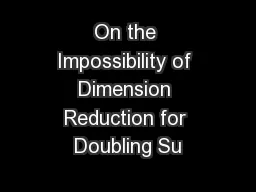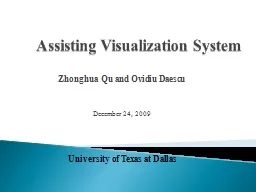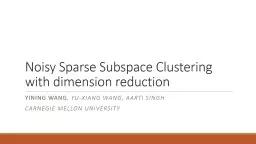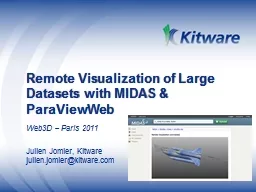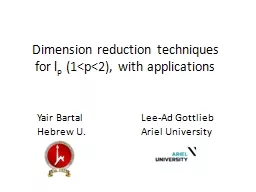PPT-Dimension Reduction and Visualization of Large High-Dimensi
Author : danika-pritchard | Published Date : 2016-04-26
via Interpolation SeungHee Bae Jong Youl Choi Judy Qiu and Geoffrey Fox School of Informatics and Computing Pervasive Technology Institute Indiana University
Presentation Embed Code
Download Presentation
Download Presentation The PPT/PDF document "Dimension Reduction and Visualization of..." is the property of its rightful owner. Permission is granted to download and print the materials on this website for personal, non-commercial use only, and to display it on your personal computer provided you do not modify the materials and that you retain all copyright notices contained in the materials. By downloading content from our website, you accept the terms of this agreement.
Dimension Reduction and Visualization of Large High-Dimensi: Transcript
Download Rules Of Document
"Dimension Reduction and Visualization of Large High-Dimensi"The content belongs to its owner. You may download and print it for personal use, without modification, and keep all copyright notices. By downloading, you agree to these terms.
Related Documents



